MENU
> Events (information) > Explanation of features of each event
On the second Sunday of every month, from 10am to 11:45am a Samadhi (meditative concentration) experience is held in the National Treasure Zen Room. (500 yen to participate) Because Dosho Osho priest, Gangoji’s was the first to introduce Zen to Japan, every time, there are a lot of priests (Zen monks, high-ranking Buddhist priests, Esoteric Buddhist priests) to guide you through a Samadhi meditation. The name Zeshin-kai comes from the Kaneiyuizesshin of proper Zen practice based on Yuishiki (consciousness-only theory).
Meditation instructors:
The meditation instructors will take turn teaching the class by monthly shift.
Inquiry
e-mail :kisankoike★yahoo.co.jp (Please replace★by @, when sending.)

Goma Kuyo, holy fire offering is made on the dirt floor in Shoshibo in front of the north-facing Fudo-son enshrined there.
A religious service to honor the new year is held from midnight at the Gokuraku-do Hall (the main hall).
After the gates opened at 9am, prayers are also offer for social success at the Horinkan in front of the m iniature five-storied pagoda.
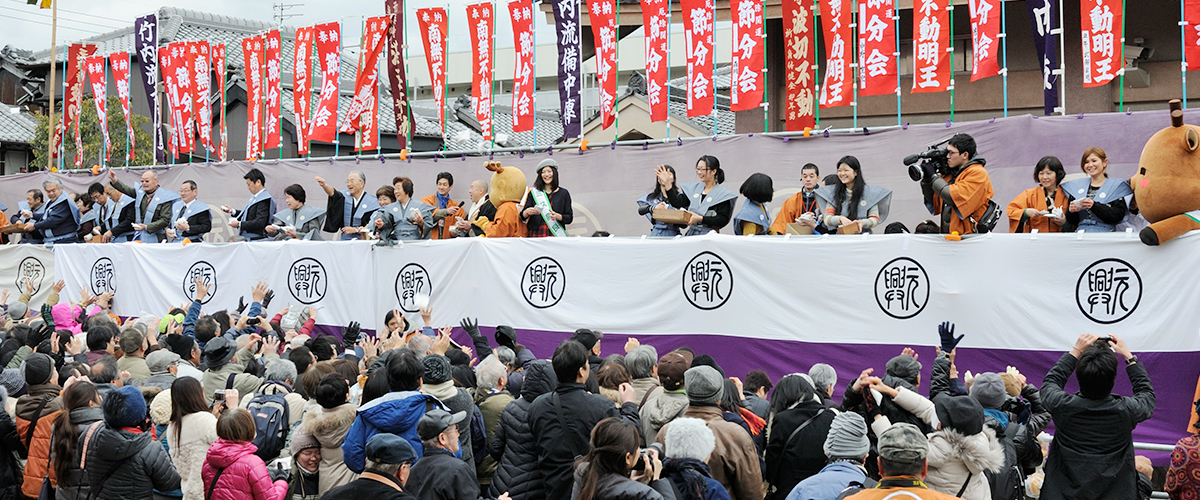
A standing image of Namikiri Fudo Myo-o (Fujiwara Era) and a sitting image of Hozan-ji Tankai Fudo Myo-o (Edo Era) are transferred to the inner holy place in the main hall where prayers are offered to ward off evil, keep the home safe, and fulfill your heart’s desire.
On the temple grounds, ascetic monks from Motosanjo Senko-ji temple celebrate the Star Festival, and offer the Saito Oogoma-ku holy fires and walk on fire while offering prayers to ward off evil and invite good luck.
The Saito Oogoma-ku holy fires consist of praying to Fudo Myo-o by inviting him into the fire and then making fire wood offerings with your prayers written on them. When the wood has burned, Fudo Myo-o will hear your prayers.
On the stage, men and women celebrating their zodiac birth year throw beans. The bean throwing comes from a Shinto ritual of chasing away demons. The original cry was, “Good luck inside,” but the opposite cry -- “Out with the demons!” -- has also been used. Gangoji is home to the Yao Ikaduchi-no-kami and the Gangoze, so lately, the cries have been, “Good luck inside, demons inside!” People are asking for good luck to come inside their house and for fierce gods to chase real evil out of your body.
Please send your prayer fee along with your registration.
To: Gangoji
11 Chuin-cho, Nara City, 630-8392
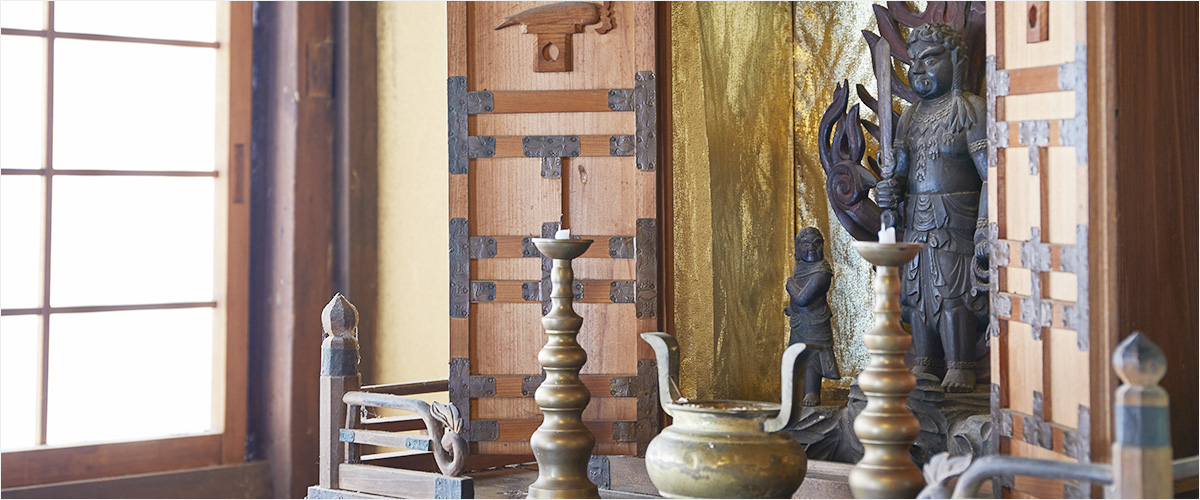
Please enter the participant’s name and age by counting in the old way. You write a prayer on a piece of wood (a stupa), then the priest will add it to the holy fire to pray for protection from evil.
| Cost: | From 500 yen (Includes prayer on the temple grounds; nothing is sent to you) |
|---|
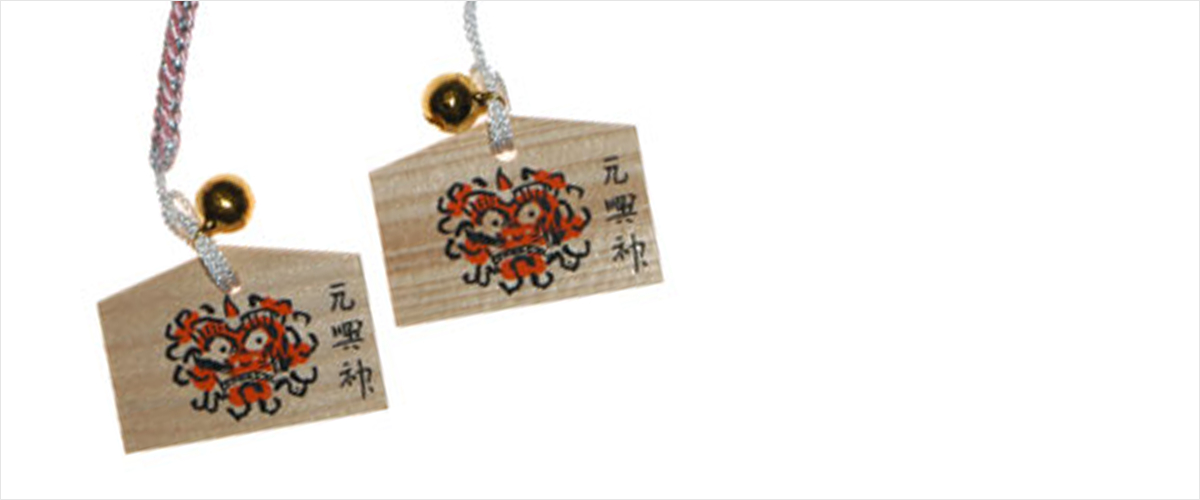
Besides the Soe Goma holy fire prayer, Gangoji paper talismans and Gagoze holy votive pictures are available.
For addresses that prefer to have these delivered, the temple will send them directly along with a greeting, “On New Year’s Eve, we are sending a Gagoze holy votive pictures used to humbly pray for blessings onto you.” We specialize in sending to families with children entering school or the workforce, a service that is popular every year.
The holy votive pictures can be displayed anywhere, but if possible, place them to the northeast. The paper talismans should be kept out of the kitchen and other places where there is fire.
| Cost: | From 2,000 yen (temple holy prayer wood offering, votive picture, paper talisman included) |
|---|
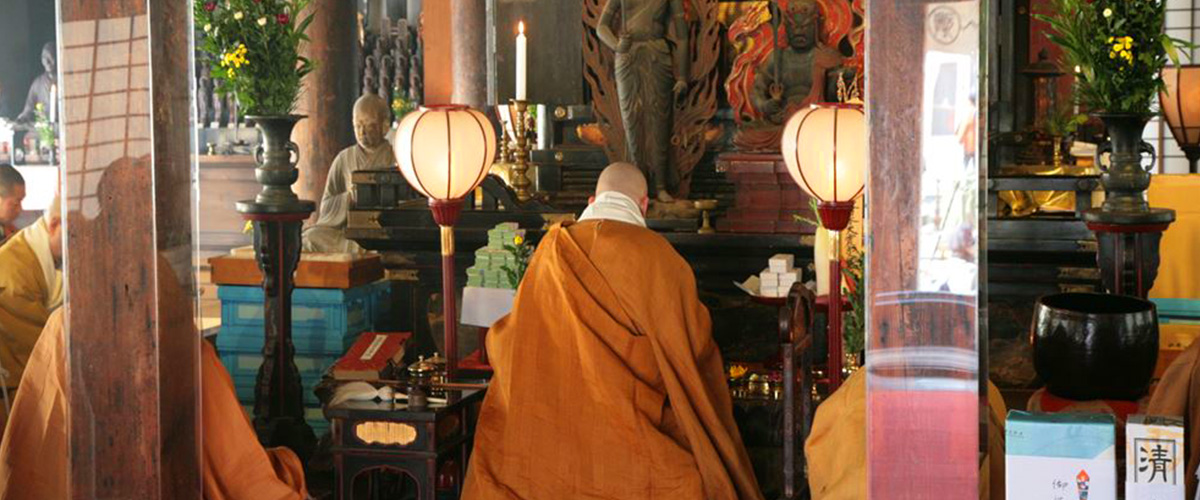
Besides the Soe Goma holy fire prayer, we offer special prayers at the Honzon principle image altar. Please specify your prayer request in legible writing. We will send a votive picture, paper talisman, and protective amulet.
| Cost: | From 5,000 yen (includes a special prayer request including Oogoma holy fire prayer conducted in the temple grounds of the main hall of Fudo Myo-o, a votive picture, paper talisman and a protective amulet.) |
|---|
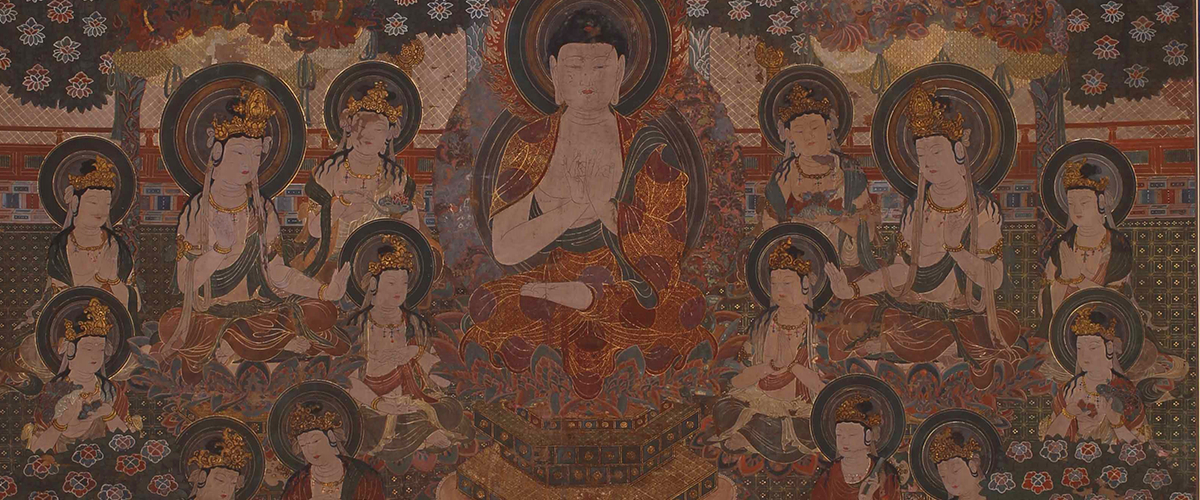
The Higan-e memorial service is conducted in the middle of equinoctial week. Stupas are offered to console the spirits of deceased people. During this time, the Chiko Mandala hanging scroll is displayed in the inner holy place in the main hall.
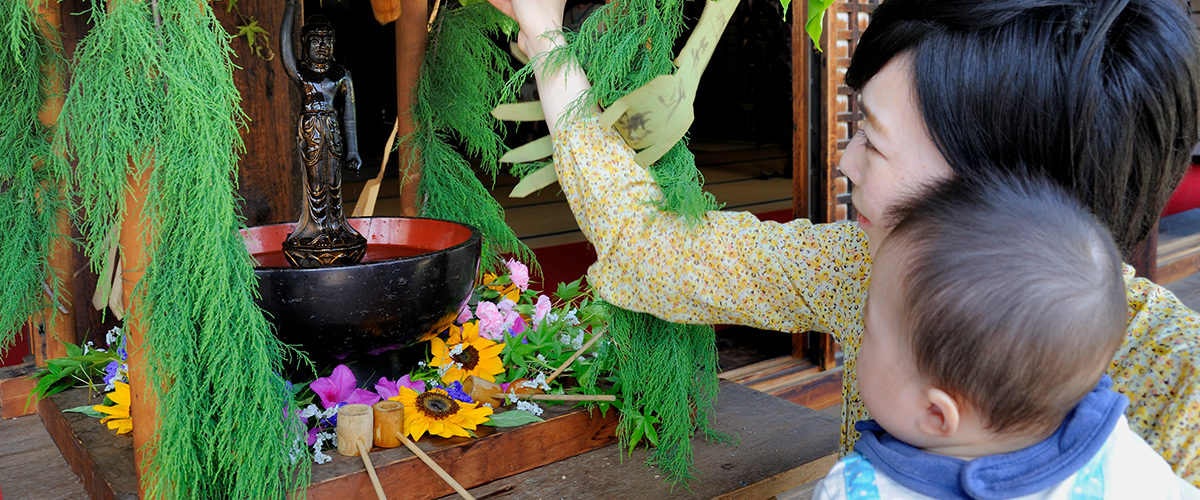
The Hana Gyodo (Flower Hall) is decorated in front of the main hall and the Shobutsu-kai (Buddha's Birthday) is held.
The Flower Festival marks the birth of Lord Buddha and is a day when all living things gather to celebrate.
The living things that usually eat and are eaten are also gathered together in the same place.This is the essence of all living things. It teaches us that there is no such thing as something bad or unpleasant.
Smiling with plants, animals, and insects as he preaches his prayers is the monk of Nanto, the southern capital of Japan.
Lyrics by Taizen
On the day of the festival, children from Gokurakubou Asuka Children's Garden will visit the shrine and we will serve amacha (sweet tea).
To pay respect to the predecessors, Taien Dai-wajo, Kosei Bosatsu and Chiko Hosshi, who contributed to the Gangoji temple, the memorial service is conducted to pray for their continuous blessing.
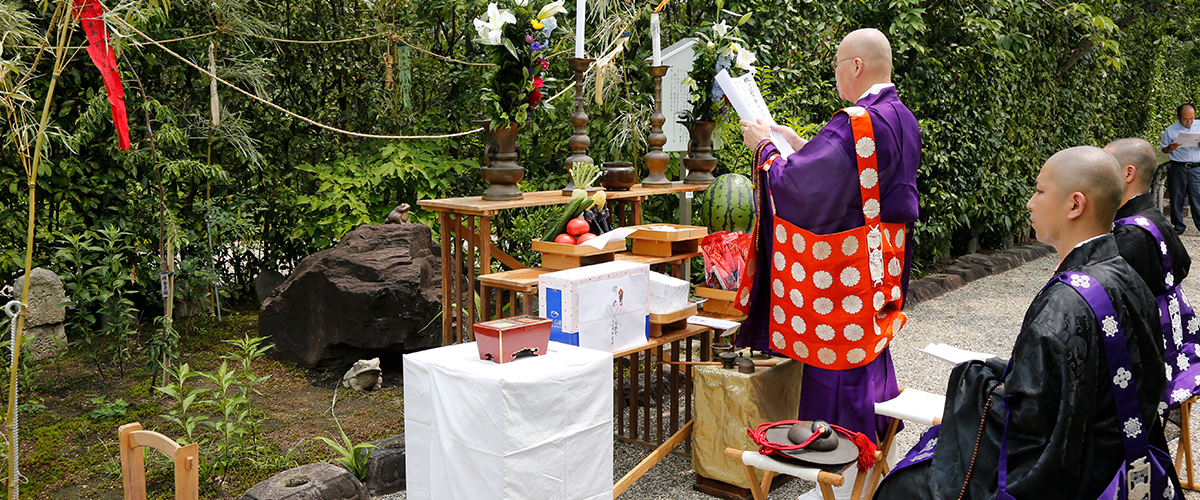
The memorial service for the frog stone transferred from the Osaka castle to the Gangoji temple grounds, as well as for the benefit of suffering spirits.
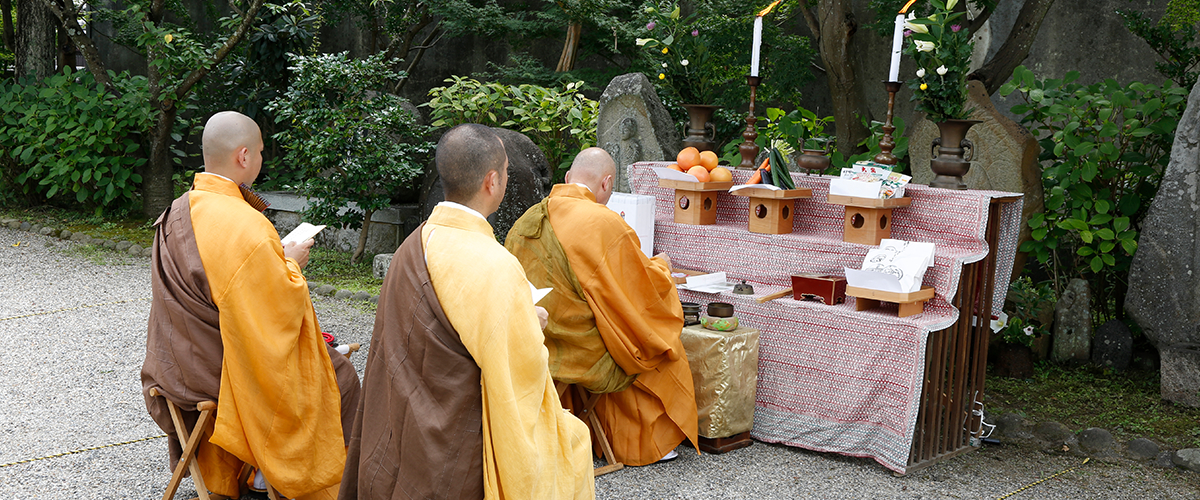
The comprehensive memorial service conducted for the stone statues, especially for the Fudo Myo-o transferred to Nara Kainoduka-cho.
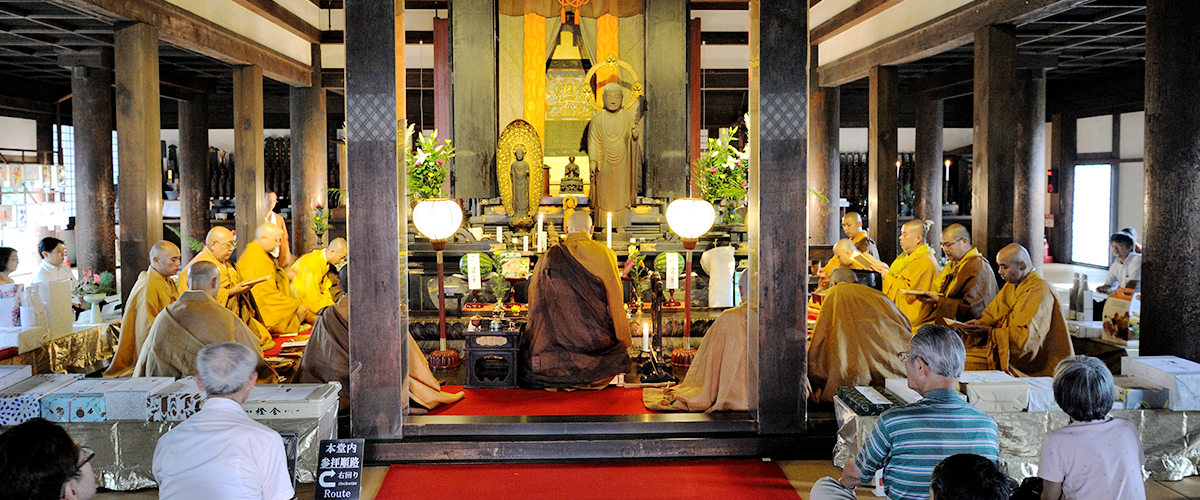
The Gangoji Jizo-e is a religious event restored in 1948. Based on the original style, decorate the Mandala-do Hall with many votive lanterns dedicated by notable persons from various fields. The current commemoration style with dedicating votive lights was started when the Futoden was arranged in 1988.
The event schedule
≪August 23≫
≪August 24≫
≪Commemoration service≫
service consists of various services and events:

The Higan-e memorial service is conducted in the middle of equinoctial week. Stupas are offered to console the spirits of deceased people. During this time, the Chiko Mandala hanging scroll is displayed in the inner holy place in the main hall.
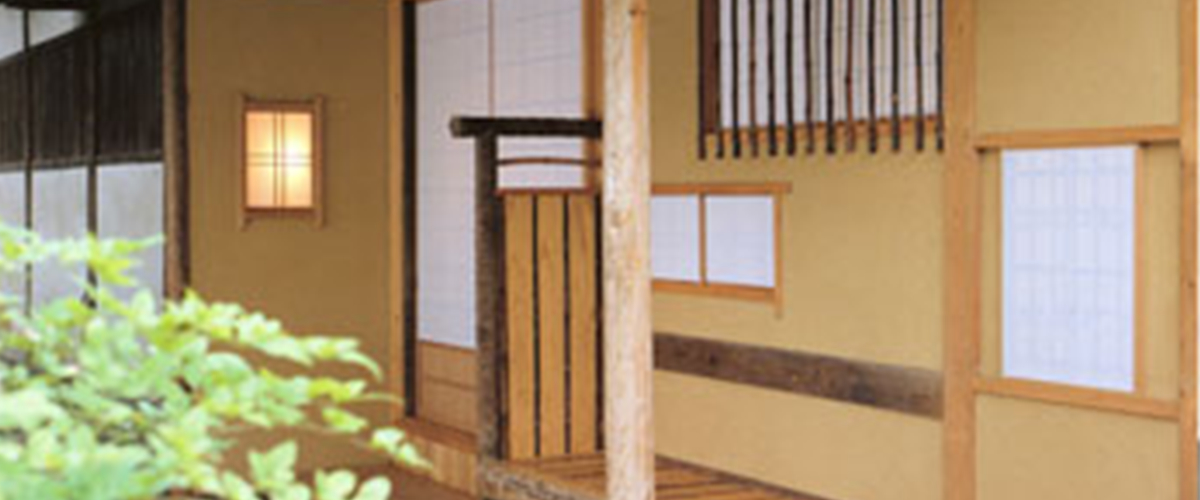
To commemorate Kawasaki Yugen who was a notable cabinetmaker in Nara. He was a craftsman who made accessories with wood and boxes. Commemorate his death at Tairakuken constructed by him, while having a tea ceremony.

The research results are presented in corporation with the Gangoji institute for research of cultural property. At this time, the Chiko Mandala Itae panel designated as an important cultural property is specially displayed.
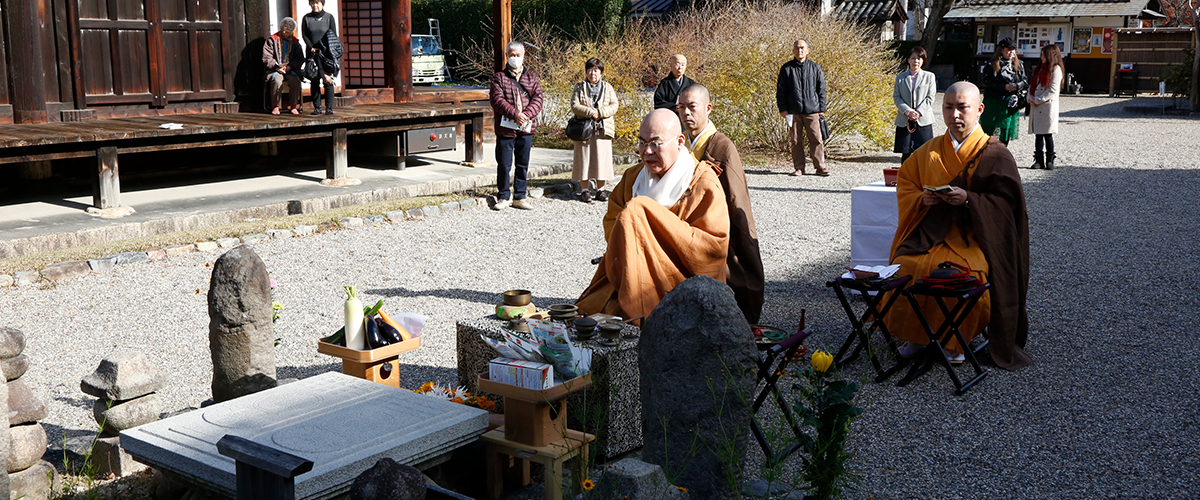
Commemoration ceremony of Buddha. Enshrine the image of Buddha in front of Buddha’s footprint stone.
Set in the land of beginnings with a history spanning 1,300 years,
Gangoji is a National Treasure and World Heritage Site of Nara.